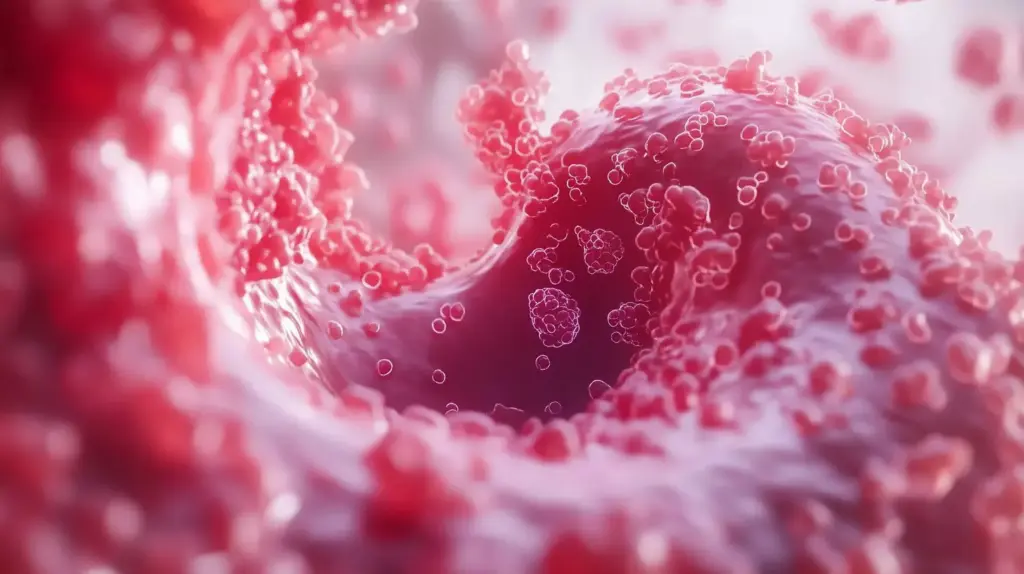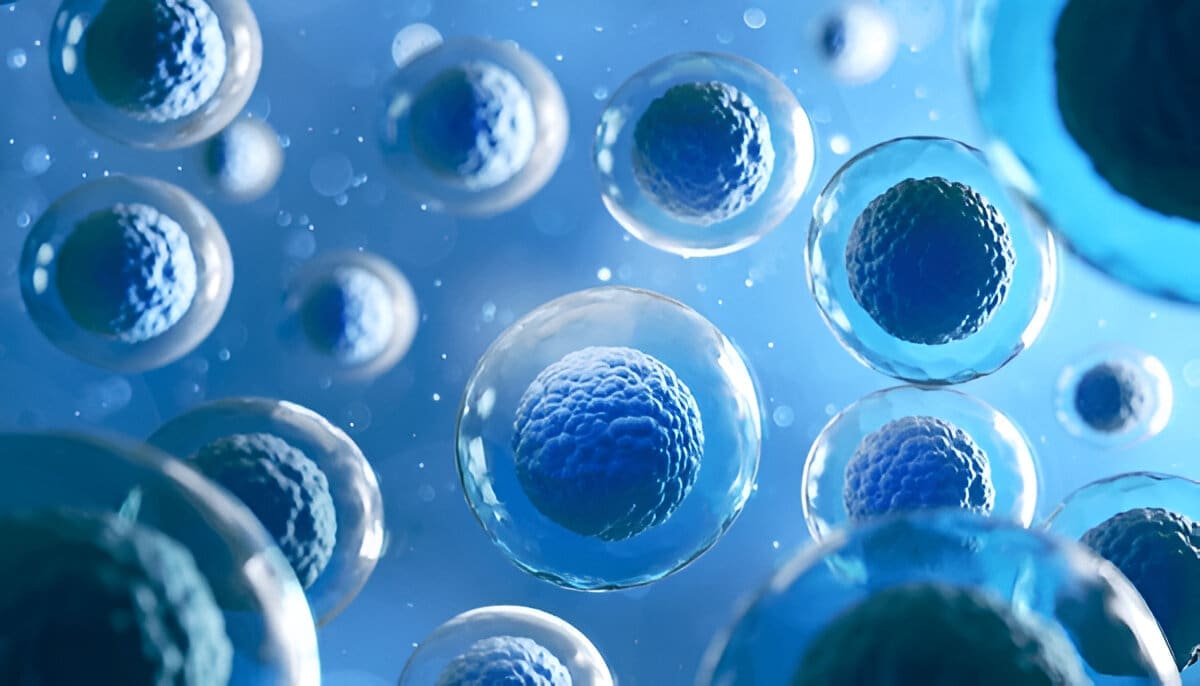Last Updated on November 27, 2025 by Bilal Hasdemir

A malignant breast tumor is a cancerous growth in the breast tissue. It often forms in the ducts or lobules. Knowing the difference between benign and malignant tumors is key to managing them well.
At Liv Hospital, we stress the importance of catching cancer early and getting top-notch care. Studies show that finding and treating breast cancer tumors early can greatly help patients. Our focus is on you, making sure you get all the care and support you need during treatment.
Key Takeaways
- Understanding the types, symptoms, and risks of malignant breast tumors is vital.
- Early detection and treatment lead to better patient outcomes.
- Liv Hospital offers full care and support for those with malignant breast tumors.
- A malignant breast tumor is a cancerous growth that can spread to other tissues.
- Our patient-centered approach means high-quality care and support for you.
Defining Malignant Breast Tumors
It’s important to know the difference between benign and malignant breast tumors. This knowledge helps in diagnosing and treating them. We will look at how malignant tumors grow in breast tissue.
Difference Between Benign and Malignant Tumors
Benign tumors are not cancerous and don’t spread. Malignant tumors, on the other hand, are cancerous and can spread. The Institute of Cancer Research says knowing cancer biology is key to finding treatments.
Benign and malignant tumors differ in how they grow and behave:
| Characteristics | Benign Tumors | Malignant Tumors |
|---|---|---|
| Cell Growth | Slow-growing, non-invasive | Rapidly growing, invasive |
| Tissue Invasion | Do not invade surrounding tissues | Invade surrounding tissues and can metastasize |
| Health Risk | Generally not life-threatening | Can be life-threatening if not treated promptly |
How Malignant Tumors Develop in Breast Tissue
Malignant breast tumors start in the breast tissue, often in ducts or lobules. They grow due to genetics, environment, and lifestyle. Experts say understanding these factors is key to preventing and catching tumors early.
“The development of malignant breast tumors is a complex process involving genetic mutations, hormonal influences, and environmental factors.”
Tumors grow through cell changes, leading to uncontrolled growth. Factors that help tumors grow include:
- Genetic mutations, such as BRCA1 and BRCA2
- Hormonal influences, like estrogen
- Family history of breast cancer
- Lifestyle choices, like diet and exercise
Knowing how tumors grow helps us focus on early detection and prevention. Our aim is to offer full care and support to those facing breast cancer.
The Biology of Malignant Breast Cancer
Understanding malignant breast cancer is key to finding treatments. We’ll look at the changes in cells and how the disease grows.
Cellular Changes and Growth Patterns
Malignant breast cancer starts when breast cells mutate. These changes make them grow and divide without control. They can then spread to other areas of the body.
The changes in cells are complex. They include:
- Genetic mutations that disrupt normal cell cycle regulation
- Epigenetic changes that alter gene expression
- Abnormal cell signaling pathways that promote proliferation and survival
How Cancer Cells Spread (Metastasis)
Metastasis is when cancer cells move from one place to another. This involves several steps:
| Step | Description |
|---|---|
| 1 | Local invasion: Cancer cells invade surrounding tissues |
| 2 | Intravasation: Cancer cells enter the bloodstream or lymphatic system |
| 3 | Circulation: Cancer cells travel through the bloodstream or lymphatic system |
| 4 | Extravasation: Cancer cells exit the bloodstream or lymphatic system and invade distant organs |
For more on breast cancer symptoms, visit Liv Hospital’s page on breast cancer.
Common Types of Malignant Breast Tumors
It’s key to know the different kinds of malignant breast tumors for good diagnosis and treatment. These tumors vary, and knowing their type helps decide the best treatment.
Ductal Carcinoma
Ductal carcinoma is the most common breast cancer, starting in the milk ducts. It can grow into the surrounding tissue or stay in the ducts. Invasive ductal carcinoma makes up about 70-80% of breast cancer cases.
Early detection and treatment of ductal carcinoma are very important. Studies show that survival rates are much higher if cancer is caught early.
Lobular Carcinoma
Lobular carcinoma starts in the lobules, where milk is made. Like ductal carcinoma, it can be invasive or non-invasive. Invasive lobular carcinoma is the second most common and can be hard to find with mammograms.
Lobular carcinoma in situ (LCIS) is not cancer but means a higher risk of getting breast cancer. Women with LCIS should talk to their doctor about their risk and how to manage it.
Less Common Types of Breast Cancer
There are other types of breast cancer, each with its own features. These include:
- Medullary carcinoma: A rare type with a clear boundary between the tumor and the surrounding tissue.
- Tubular carcinoma: Usually small and has a good outlook.
- Mucinous carcinoma: Known for having mucin, a key part of mucus.
| Type of Breast Cancer | Characteristics | Prognosis |
|---|---|---|
| Ductal Carcinoma | Originates in milk ducts, can be invasive or non-invasive | Varies based on stage and invasiveness |
| Lobular Carcinoma | Begins in lobules, can be invasive or non-invasive | Generally favorable if detected early |
| Medullary Carcinoma | Rare, distinct boundary between tumor and surrounding tissue | Often favorable due to distinct boundaries |
A leading oncologist says, “The variety of breast cancer types shows the need for personalized treatment. Knowing the specific details of a patient’s cancer is key to better outcomes.”
“The classification of breast cancer into different types is not just about diagnosis; it’s about tailoring the treatment to the individual needs of each patient.”
We understand the importance of accurate diagnosis and treatment plans for malignant breast tumors. By knowing the different types of breast cancer, patients and doctors can work together to find the best treatment.
Warning Signs and Symptoms
It’s vital to know the warning signs of malignant breast tumors for early detection and treatment. Being aware of changes in your breast health is key to spotting issues early.
Physical Changes to Watch For
Signs of malignant breast tumors include a new lump or thickening in the breast or underarm area. Also, watch for:
- Changes in breast size or shape
- Nipple discharge or inversion
- Dimpling or puckering of the skin
- Redness or scaliness of the nipple or breast skin
When to Seek Medical Attention
If you notice unusual changes, seek medical attention right away. Early detection greatly improves treatment success. Studies show that awareness and regular screening are critical for early breast cancer detection.
Stay vigilant about your breast health and see a healthcare professional if you’re worried about symptoms. Your awareness and proactive approach can make a significant difference in treatment effectiveness.
Risk Factors for Developing Malignant Breast Tumors
Malignant breast tumors can develop due to genetic, lifestyle, and environmental factors. Knowing these risk factors helps in early detection and prevention of breast cancer.
Genetic and Family History Factors
Genetic mutations are key in the growth of malignant breast tumors. BRCA1 and BRCA2 genes are well-known for increasing breast cancer risk. Women with a family history of breast cancer, like parents or siblings, face higher risks. We suggest genetic counseling and testing for those with a strong family history.
- A family history of breast cancer, specially at a young age
- Genetic mutations like BRCA1 and BRCA2
- Previous chest radiation exposure
Lifestyle and Environmental Factors
Lifestyle and environmental factors also play a role in breast tumor risk. Drinking alcohol, being overweight, and not exercising can raise the risk. We stress the need for a healthy lifestyle to lower these risks.
- Drink alcohol in moderation
- Keep a healthy weight with diet and exercise
- Avoid harmful chemicals and radiation
Age and Gender Considerations
Age and gender are big risk factors for malignant breast tumors. Most breast cancer cases happen in women over 50. While rare, men can also get breast cancer, often due to genetics or family history. We urge awareness and regular check-ups for all ages and genders.
Understanding and tackling these risk factors is key to early detection and prevention of malignant breast tumors. Regular screenings and a healthy lifestyle are essential in managing and reducing breast cancer risk.
Diagnostic Procedures for Breast Tumors
Diagnosing breast tumors requires advanced imaging tests and biopsy procedures. We will explain these in detail. Accurate diagnosis is key for effective treatment. Thanks to new imaging and biopsy methods, doctors can now diagnose more accurately.
Imaging Tests
Imaging tests are essential for finding and checking breast tumors. The main imaging methods are:
- Mammography: A low-dose X-ray that shows the breast tissue. It helps find tumors that are too small to feel.
- Ultrasound: Uses sound waves to create images. It helps tell solid masses from fluid-filled cysts.
- MRI (Magnetic Resonance Imaging): Gives detailed images of the breast tissue. It’s useful for seeing how far cancer has spread and if there are more tumors.
Biopsy Procedures
Biopsy procedures take a sample of breast tissue for a microscope check. There are different types of biopsies:
| Biopsy Type | Description |
|---|---|
| Fine-needle aspiration biopsy | Uses a thin needle to get cells from the tumor. |
| Core needle biopsy | Removes a bigger sample of tissue with a thicker needle. |
| Surgical biopsy | Removes a part or all of the tumor for a check. |
Understanding Your Pathology Report
After a biopsy, a pathology report is made. It tells about the tumor’s characteristics. This report is key for knowing the cancer type and stage. It helps decide treatment.
- Tumor type: Shows the specific type of breast cancer, like ductal or lobular carcinoma.
- Tumor grade: Tells how much the tumor cells look like normal cells. This affects prognosis and treatment.
- Receptor status: Checks for certain receptors (e.g., estrogen, progesterone, HER2) that can change treatment options.
Knowing about these diagnostic steps and what they mean is important for a good treatment plan. We aim to help you through every step. We want to make sure you get the best care possible.
Staging and Grading of Malignant Breast Cancer
Staging and grading of malignant breast cancer are key in treatment planning. They help doctors understand how far the cancer has spread and how aggressive it is. This information is vital for creating a treatment plan that works best for the patient.
The TNM Staging System
The TNM staging system is a common way to classify cancer. It looks at the tumor size (T), nearby lymph nodes (N), and if the cancer has spread (M). This system gives doctors important details about the cancer’s spread and helps predict the outcome.
We use the TNM system to divide breast cancer into stages from 0 to IV. The stage of cancer is a big factor in choosing the right treatment.
- Tumor Size (T): Bigger tumors mean a higher stage and possibly a worse prognosis.
- Lymph Node Involvement (N): How many lymph nodes are affected greatly affects the cancer stage.
- Metastasis (M): If the cancer has spread to distant parts, it’s a more advanced stage.
Tumor Grades and What They Mean
Tumor grading is another important part of assessing breast cancer. It looks at how aggressive the cancer cells are by examining them under a microscope.
The grade of a tumor is based on how much the cancer cells look like normal cells. Tumors are graded from 1 to 3, with 1 being the least aggressive and 3 being the most aggressive.
- Grade 1: Cancer cells look a lot like normal cells and grow slowly.
- Grade 2: Cancer cells are somewhat different from normal cells and grow at a moderate pace.
- Grade 3: Cancer cells are very different from normal cells and are aggressive, often leading to a worse prognosis.
Knowing the stage and grade of breast cancer is essential for choosing the best treatment. We work with patients to create treatment plans that fit their specific cancer needs.
Treatment Options for Malignant Breast Tumors
The treatment for malignant breast tumors has changed a lot. Now, there are many options for each patient. We know every patient is different, so we tailor the treatment to fit their needs.
Surgical Approaches
Surgery is often the first step for treating malignant breast tumors. We have several surgical options:
- Lumpectomy: This involves removing the tumor and a small area of tissue around it.
- Mastectomy: This is when the whole breast is removed, sometimes with nearby lymph nodes.
- Breast-conserving surgery: This aims to keep the breast’s look by removing the tumor and some tissue.
The right surgery depends on the tumor’s size, where it is, and the patient’s health and wishes.
Radiation Therapy
Radiation therapy is key for many patients with malignant breast tumors. It uses high-energy rays to kill cancer cells. We use the latest techniques, like:
- External beam radiation therapy (EBRT): This sends radiation from outside the body.
- Brachytherapy: This places a radioactive source close to or in the tumor.
After surgery, radiation therapy helps kill any cancer cells left behind. It also lowers the chance of the cancer coming back.
Chemotherapy and Hormone Therapy
Chemotherapy and hormone therapy are treatments that target cancer cells all over the body. Chemotherapy uses drugs to kill cancer cells. Hormone therapy is for tumors that grow because of hormones, aiming to stop that growth.
We adjust these treatments based on the tumor and the patient’s health.
Targeted Therapies and Immunotherapy
Targeted therapies and immunotherapy are new ways to treat malignant breast tumors. Targeted therapies focus on specific cancer cell traits, like HER2-positive tumors. Immunotherapy boosts the body’s immune system to fight cancer cells better.
These new treatments offer hope for patients with certain types of breast cancer. We are dedicated to keeping up with these advancements.
We mix these treatments in a way that works best for each patient. Our team works with each patient to create a treatment plan that meets their needs and situation.
Innovative Approaches to Malignant Breast Cancer Treatment
New ways to treat malignant breast cancer are giving patients hope. At Liv Hospital, we use the latest medical knowledge to help our patients. Our team keeps up with the latest in medicine, ensuring our patients get the best care.
Advances in Precision Medicine
Precision medicine has changed how we fight cancer. It lets us target treatments based on a tumor’s genetic makeup. This means we can create treatment plans that work best for each patient.
Precision medicine uses advanced genetic tests to find cancer targets. This method helps create treatments that hit cancer cells hard but spare healthy tissues.
Clinical Trials and Emerging Therapies
Clinical trials are key in finding new cancer treatments. They let us test new therapies, like targeted treatments and immunotherapies. Our patients get to try these new treatments through trials.
“The future of cancer treatment lies in our ability to harness the power of precision medicine and emerging therapies, giving patients more effective and personalized care.”
Liv Hospital’s Patient-Centered Approach to Breast Cancer Care
Liv Hospital is dedicated to patient-centered care. We offer detailed breast cancer treatment plans for each patient. We know that every person’s fight against breast cancer is different. So, we tailor our care to fit each person’s needs.
Comprehensive Treatment Protocols
We have treatment plans that cover all parts of breast cancer care. Our team includes experts from many fields. They work together to create a care plan that’s right for each patient.
- Advanced Surgical Techniques: We use the newest surgical methods. This includes surgeries that save the breast and those that help rebuild it.
- Radiation and Systemic Therapies: Our radiation therapy is top-notch. We also use chemotherapy and hormone therapy to fight cancer cells.
- Targeted and Immunotherapies: We use treatments that target cancer cells based on each patient’s cancer type. This makes treatment more effective.
To learn more about new cancer treatments, visit this resource. It has the latest on cancer treatment.
Innovative Solutions and Preventive Care
At Liv Hospital, we don’t just treat breast cancer. We also work to prevent it. Our preventive care includes genetic counseling, risk assessments, and teaching about lifestyle changes to lower cancer risk.
- Genetic Counseling: We offer genetic counseling to find people at high risk. We guide them on how to prevent cancer.
- Risk Assessment: Our tools help find patients who might need early care or prevention.
- Lifestyle Modifications: We teach patients how to lower their cancer risk. This includes diet, exercise, and avoiding harmful substances.
We mix new solutions with detailed treatment plans. Our goal is to improve patient outcomes and quality of life for those with breast cancer.
Living With a Malignant Breast Tumor Diagnosis
Getting a diagnosis of a malignant breast tumor is tough. It means more than just treatment. It also means big changes in how you feel and live. We’re here to help you through it all.
Emotional and Psychological Support
Getting this news can be really hard. It affects not just the person with cancer but their family too. Emotional and psychological support is key during this time. Research shows it can really help patients feel better.
We offer many ways to support you emotionally:
- Counseling to help you deal with your feelings
- Support groups where you can share and connect with others
- Help for your family to understand and support you
It’s important to know the emotional toll of a diagnosis. Don’t hesitate to ask for help. Our team is here to support you every step of the way.
Lifestyle Adjustments During and After Treatment
Making lifestyle adjustments is vital when you have a malignant breast tumor. These changes can help you deal with treatment side effects and stay healthy.
Some important lifestyle changes include:
- Eating a healthy diet to help your body heal
- Doing regular exercise, as your doctor suggests, to keep strong and mobile
- Managing stress with activities like meditation or yoga
By making these changes, you can handle treatment better. We’re here to help you through these adjustments and support your recovery.
Conclusion
Understanding malignant breast tumors and their treatment is key. We’ve looked at the different types, symptoms, and risks. Recent research and treatment advances offer better results, highlighting the need for early detection and full care.
At Liv Hospital, we focus on patient-centered care. We offer new solutions and support to meet each patient’s needs. Our goal is to give the best treatment for malignant breast tumors.
By keeping up with new treatments and focusing on patient care, we can improve health outcomes. We aim to provide top-notch healthcare and support for international patients. This includes those seeking advanced medical treatments.
FAQ
What is a malignant breast tumor?
A malignant breast tumor is a dangerous growth. It can spread to other tissues and even to other parts of the body if not treated right away. It starts in the breast tissue, often in the ducts or lobules. Things like genes and the environment can affect its growth.
What are the common types of malignant breast tumors?
The most common types are ductal carcinoma and lobular carcinoma. Ductal carcinoma starts in the milk ducts, and lobular carcinoma starts in the lobules. There are also less common types like medullary, tubular, and mucinous carcinomas.
What are the symptoms of malignant breast tumors?
Signs include a new lump or thickening in the breast. You might also notice changes in breast size or shape. Nipple discharge or inversion is another symptom. If you see any unusual changes, get medical help right away.
What are the risk factors for developing malignant breast tumors?
Genetic mutations and family history are big risks. Lifestyle choices, age, and gender also play a part. The risk goes up with age, and knowing these factors can help spot higher risks.
How are malignant breast tumors diagnosed?
Doctors use imaging tests like mammography and ultrasound. They also do biopsy procedures to check tissue samples. Understanding the pathology report is key to knowing the type and stage of cancer.
What is the TNM staging system?
The TNM staging system looks at the tumor size, lymph node involvement, and metastasis. This info is vital for figuring out the prognosis and treatment plan.
What are the treatment options for malignant breast tumors?
Treatment options include surgery, radiation, chemotherapy, hormone therapy, targeted therapies, and immunotherapy. The right treatment depends on the cancer’s stage, type, and characteristics, as well as the patient’s preferences.
What is the role of precision medicine in treating malignant breast cancer?
Advances in precision medicine offer hope for malignant breast cancer patients. New therapies, like targeted treatments and immunotherapies, are being studied to see if they can improve outcomes.
How can Liv Hospital support patients with malignant breast tumors?
Liv Hospital focuses on a patient-centered approach. They offer treatments like surgery, radiation, and systemic treatments. They also emphasize preventive care and innovative solutions to better patient outcomes.
What kind of support is available for patients living with a malignant breast tumor diagnosis?
Emotional and psychological support are key for coping with the diagnosis and treatment. Making lifestyle changes during and after treatment can also improve well-being and outcomes.
References
- Cancer Research UK. Breast cancer types. Available from: https://www.cancerresearchuk.org/about-cancer/breast-cancer/types
- American Cancer Society. Types of breast cancer. Available from: https://www.cancer.org/cancer/types/breast-cancer/about/types-of-breast-cancer.html
- Susan G. Komen. Tumor types & prognostic factors. Available from: https://www.komen.org/breast-cancer/diagnosis/factors-that-affect-prognosis/tumor-types/
- National Breast Cancer Foundation (U.S.). Breast tumors. Available from: https://www.nationalbreastcancer.org/breast-tumors/
- Breast Cancer Research Foundation (BCRF). Breast cancer types. Available from: https://www.bcrf.org/about-breast-cancer/breast-cancer-types/








